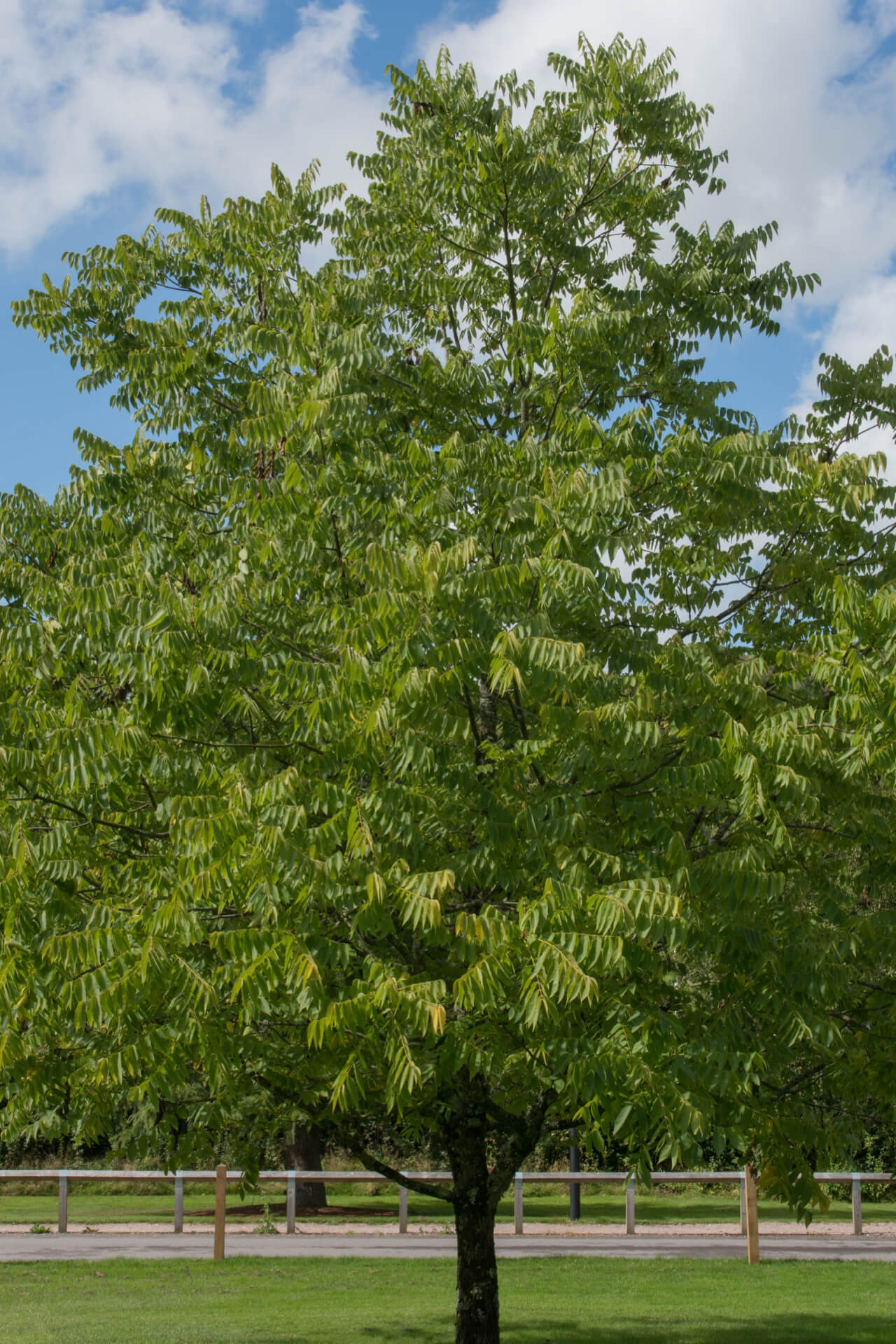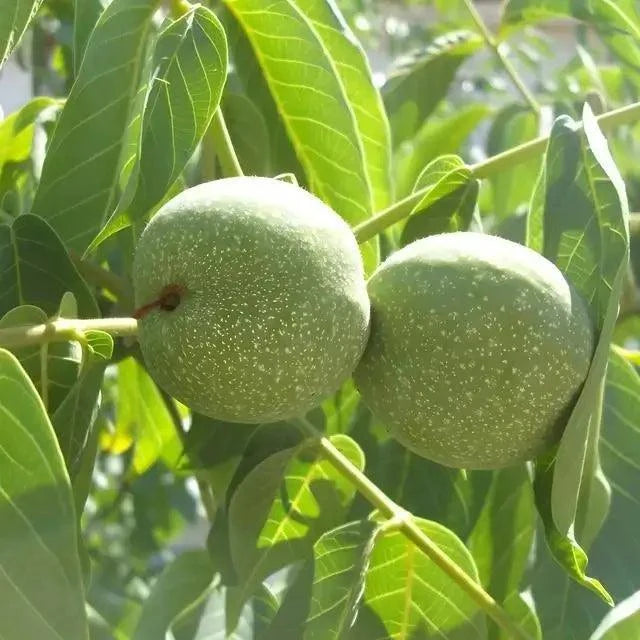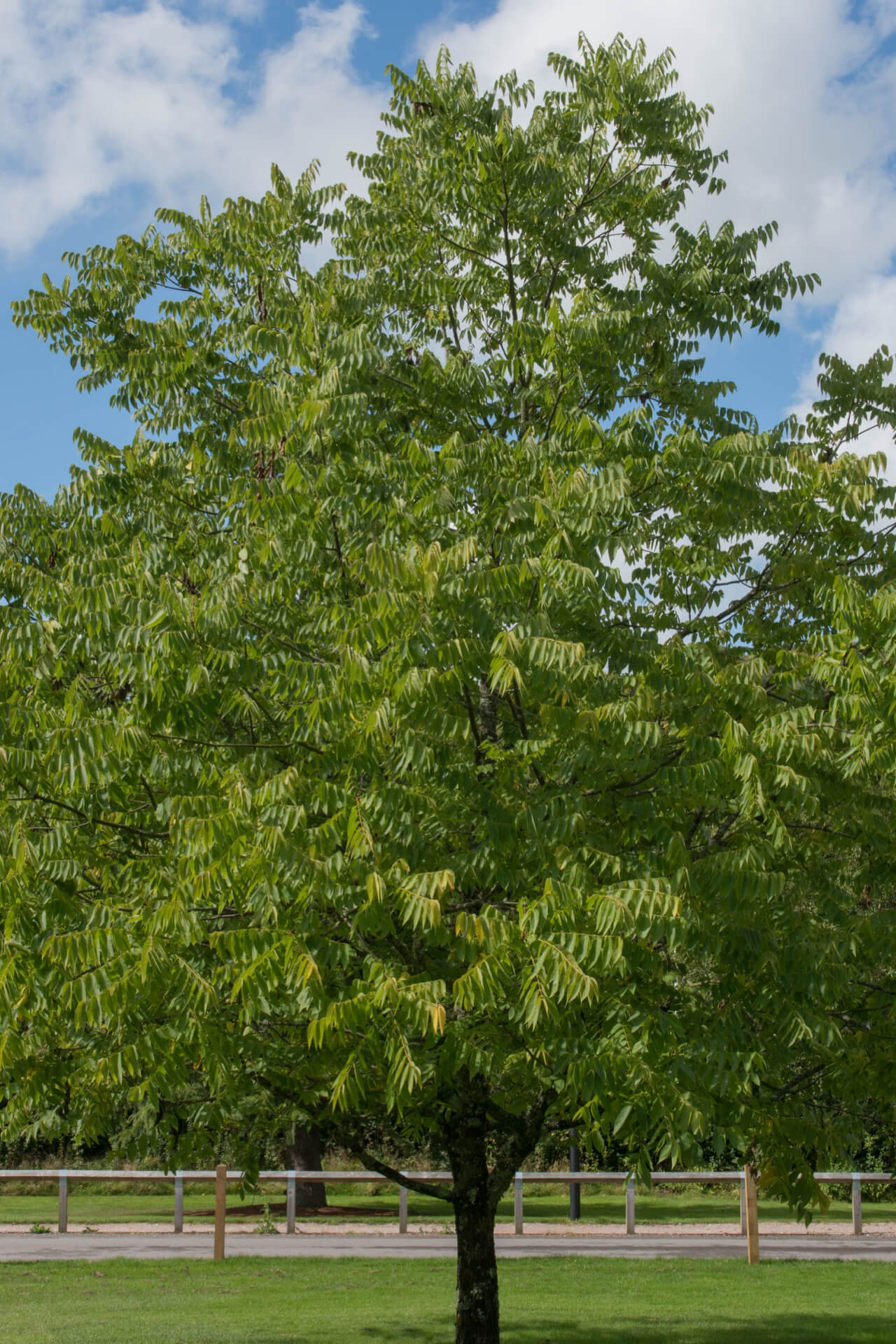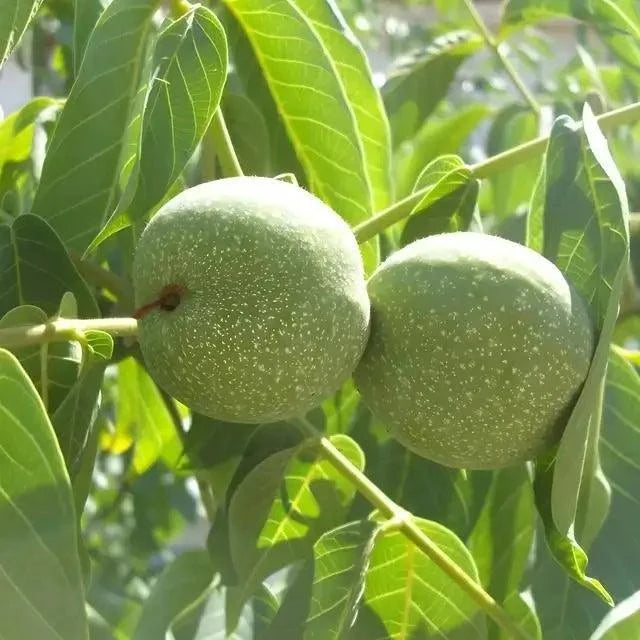


The black walnut tree is very popular because of its beautiful deep-brown to black bark and its vigorous growth habit. As it matures, it forms a round crown of branches and leaves as wide as the tree is tall. This tree is well-suited to shading large landscapes, either alone or in stands. It will grow to approximately 50 to 75 feet high when fully grown, but very old trees have been known to reach 150 feet in height.
Birds Love The Black Walnut Tree
Its drip line will spread 50 to 75 feet wide. They require full sunlight and are intolerant of shade. Juglans Nigra prefers well-drained, neutral soil. Consider planting stands of these trees to promote pollination and increase nut production. Birds and small forest creatures will be attracted to them.
The tree drops large, green husks containing black walnuts in October after its leaves have fallen. The nuts attract wildlife such as squirrels, foxes, and woodpeckers, which makes it an ideal tree for your family of birdwatchers.
Planting a Black Walnut Tree - Juglans Nigra will provide sustainable nuts in the future
In addition to being a great shade tree, it has many practical uses. The nuts of Juglans Nigra, known as the nuts, can be harvested. The shells can be used to make rich, brown organic dyes for cloth and wools. Older trees can be tapped for their sweet sap. Because of all its uses, this is an excellent tree for the homesteader.
A Black Walnut Tree - Juglans Nigra creates a swath of shade
It is important to find the right companion plants for the trees. This tree does discourage the growth of some plants beneath its drip line. However, many beautiful companion plants will thrive beneath its shade, such as trilliums, hosta, cinnamon ferns, spanish bluebells, and bellflowers.
Black walnut trees are known for their longevity: The oldest Juglans Nigra on earth is 300 years old.
Zone - 4-9. Mature Height: 50-75 ft. Mature Width: 50-75 ft. Growth/Year: 3-4 ft. Sunlight: Full Sun. Soil Conditions: Well-drained, neutral soils.
- Choosing a selection results in a full page refresh.
- Opens in a new window.



